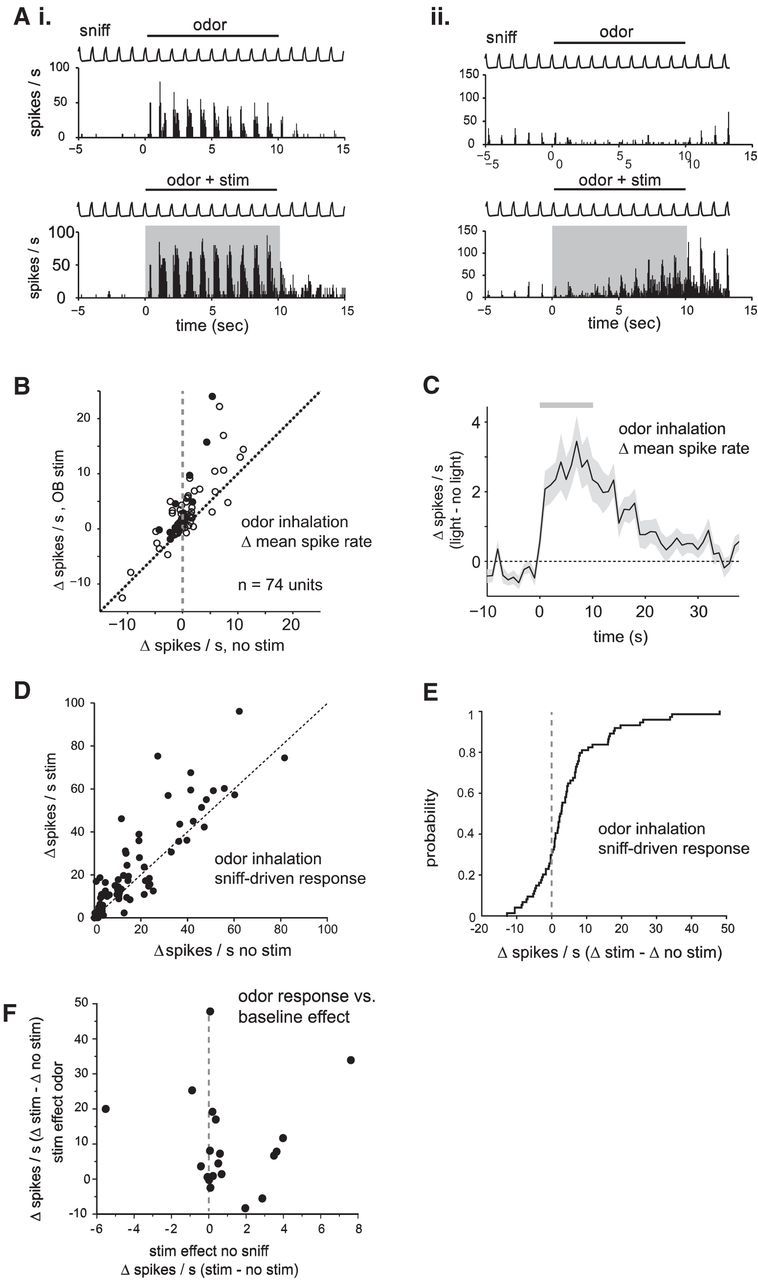Figure 8.

Optogenetic activation of serotonergic OB afferents from raphe modestly enhances odor responses in presumptive MT cells. A, Examples of effect of optical stimulation on odorant-evoked responses in two different units. Top, Rate histograms (mean of 5 trials) in the absence of optical stimulation; bottom show the same data with optical stimulation simultaneous with odorant presentation. The first unit (Ai) shows strong odorant-evoked excitation which is increased during stimulation of serotonergic afferents (odorant, isoamyl acetate); the second unit (Aii) shows odorant-evoked suppression of activity, which transforms into excitation during optical stimulation (odorant, ethyl butyrate). B, Plot of odorant-evoked changes in spike rate (Δ spikes/s) in the absence of (no stim) and during (stim) optogenetic stimulation of raphe fibers to the OB. Filled circles indicate units tested with five or more trials in each condition; open circles indicate units tested with three or four trials. C, Time course of change in firing rate caused by optical stimulation (Δ spikes/s with optical stimulation vs without optical stimulation; mean ± SEM across all units). Gray bar indicates timing of optical stimulation. The trace indicates change in mean spike rate in 1 s bins relative to the mean rate before stimulation. Time axis is relative to time of stimulation onset. D, Plot of the amplitude of the inhalation-linked spike burst during inhalation of odorant (measured as change in firing rate relative to pre-inhalation baseline) in the presence and absence of optical stimulation. E, Cumulative probability plot of the effect of optical stimulation on inhalation-linked responses, taken from same data shown in D. F, Effects of optical stimulation on baseline MT cell spiking in the absence of inhalation (“stim effect no sniff”) versus effects on odorant-evoked responses (“stim effect odor”) in the same unit, plotted for the subset of the units in which stimulation effects could be measured under both conditions.
